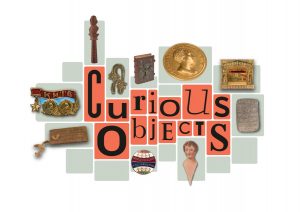 The new Cambridge University Library exhibition opens today. Entitled ‘Curious Objects’, it’s a fascinating display of some of the things that the library accumulated, mostly in a period before the strict demarcation between libraries (for books) and museums (for objects) had kicked in.
The new Cambridge University Library exhibition opens today. Entitled ‘Curious Objects’, it’s a fascinating display of some of the things that the library accumulated, mostly in a period before the strict demarcation between libraries (for books) and museums (for objects) had kicked in.
Among the curiouser articles on display is a leather boot from Lithuania, which was presented to the library along with a shoe and a copy of the New Testament in Lithuanian by the widow of the translator, Tomasz Ramsaeus. Quite why she thought the library needed this footwear is not fully explained. There is also a ‘luminous trumpet’ or spirit trumpet, for use in a séance, together with some ectoplasm in the form of a ‘cloth-like substance’ (which appears to the untrained eye merely to be cloth). ‘This example was captured during a séance given by the medium Helen Duncan and is part of the archive of the Society for Psychical Research’.
For devotees of literature like me, there’s a tobacco stopper made of wood from the mulberry tree supposedly planted by Shakespeare at New Place in Stratford. The catalogue tells us that the tree was cut down by the Reverend Francis Gastrell in the 1750s because he had ‘grown tired of tourists asking to see it’. (That’s one solution to the blight of tourism). Souvenirs made from Shakespeare’s mulberry were apparently commonplace in later eighteenth-century England. A neighbouring cabinet has a beautiful silk bookmark with thirteen strings, each woven with a verse from a medieval Latin prayer to Jesus.
Those of us who suspect that the theory of evolution would not have been formulated had it not been for the proliferation of facial hair in Victorian England will have their views confirmed by another item in the exhibition: a set of cuttings from the beard and whiskers of Frank Chance, who considered himself an exception to Darwin’s rule that ‘when in man the beard differs in colour from the hair of the head … it is … invariably of a lighter tint’, and who wrote to Darwin (with enclosures) to tell him so.
Stone-age tools from Nigeria, wall-paintings from Pompeii, children’s games from Paris, slippers from South India, oracle-bones from Sumatra, spear-heads from Western Australia: there is a whole world of stuff in there. Go see!